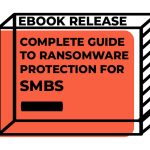Social Engineering Email Scams to Look Out For
Do you ever get the feeling that someone is watching you? In today’s digital age, it can be hard to know who might be keeping tabs on you. Fortunately, cybercriminals aren’t half as clever as they think they are. They tend to make obvious mistakes, letting us know they’re not the sharpest knives in the drawer. In other words, if something seems too good to be true or too suspicious to be genuine—it probably is.
That being said, there are still specific types of scams and email messages that seem so out of place that we have to ask: What are these people thinking? Keep reading to learn more about some of the most common cybersecurity email scams.
What is Social Engineering?
Social engineering is an attack that relies on manipulating people and tricking them into giving away sensitive information. While social engineering is often associated with human interactions, it can also be used in digital contexts.
In many cases, social engineering attacks occur when a hacker uses an account with the same name and email address as someone who already has access to a system. This tactic is called “social engineering with the same username and password.”
Other times, hackers might use an unauthorized account to obtain privileged access to a system. With access now granted, the intruder then conducts the social engineering attack.
 Email Phishing Scams
Email Phishing Scams
A phishing scam is a fraudulent email that directs a person to visit an incorrect website and enter sensitive information. Once the information is stolen and put into the wrong hands, it is called a “phishing scam.”
There are several ways that a phishing scam might go about fooling people. For example, a malicious email might appear from a trusted person, such as a friend, colleague, or relative. The email might even include a link that directs the person to visit a website they trust, like Amazon.
Baiting
A bait is malware that a cybercriminal uses to lure a person into downloading a malicious file. The bait is usually disguised as a legitimate message linked to the file. Bait files are often used to spread malware through compromised websites. When a visitor visits the website, the site’s code will download the malware and infect the visitor’s device.
Cybercriminals use a variety of ways to lure people into downloading malware. For example, a malicious website’s code might trick you into thinking you must download a file to visit the website. You might also come across a link that looks like it comes from a friend or family member. Such links might appear in social media messages or emails.
Scareware
Scareware is malware that tricks you into believing a legitimate problem exists on your computer. After you pay to get rid of the supposed problem, the malware author demands payment again.
Scareware is often disguised as an alert that claims your computer is infected with a dangerous virus. What you are lured into paying is usually the “scare amount,” which is generally a few hundred dollars or more.
Another way scareware is used is to trick you into downloading malware, which then proceeds to charge your credit card or other financial accounts. Some of the most common scareware themes include medical problems, threats to children, and pornography.
Pretexting
Pretexting is a type of social engineering involving tricking someone into revealing sensitive information by impersonating someone in authority. For example, an attacker might pose as a technician and trick you into giving away your password.
A pretexting attack might also involve impersonating a friend, colleague, or family member. The attacker might call you and claim that they have missed you or that an emergency requires your attention. You might also be tricked into revealing sensitive information by an impostor pretending to be from a government agency, bank, or other financial institution.
Business Email Compromise (BEC)
A Business Email Compromise (BEC) is a type of social engineering attack that uses the credentials of an employee who works at a company to gain access to the system. Cybercriminals often use phishing emails to trick employees into clicking malicious links that give hackers access to their systems.
Another way BEC works is through “spearphishing,” — where an attacker sends a fake email that uses the email address of a legitimate employee. The fake email might use that employee’s and company names to fool the person into thinking it comes from a colleague. The fake email might also include a link that directs the employee to enter their credentials into a website.
Bottom line
Social engineering attacks are pretty sophisticated and involve various tricks to fool people. Besides, it is possible to steal sensitive information with little to no effort if you use a phishing email address or get tricked by a malicious website. The best way to protect yourself from social engineering attacks is to practice safe online behavior and resist manipulation.
Protected Harbor provides complete cybersecurity, including email filtering, secure network endpoints, employee training, and data recovery. The company’s mission is to protect the most sensitive digital assets from third-party theft, loss, or compromise.
We offer comprehensive protective solutions for both on-premises and cloud environments. We have a 24/7 service team with experienced technical experts who can expediently respond to critical incidents.
In addition to security monitoring and threat detection, Protected Harbor offers a full range of managed cybersecurity services, including antivirus protection, encryption, data backup, endpoint security, network security, and remote access.
Contact us today to get a free cybersecurity assessment and ransomware protection.






